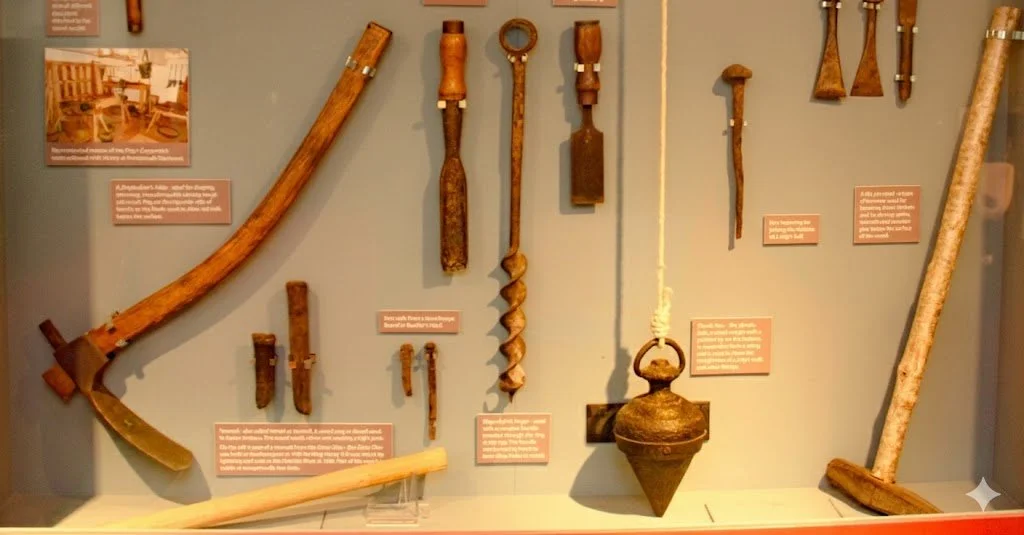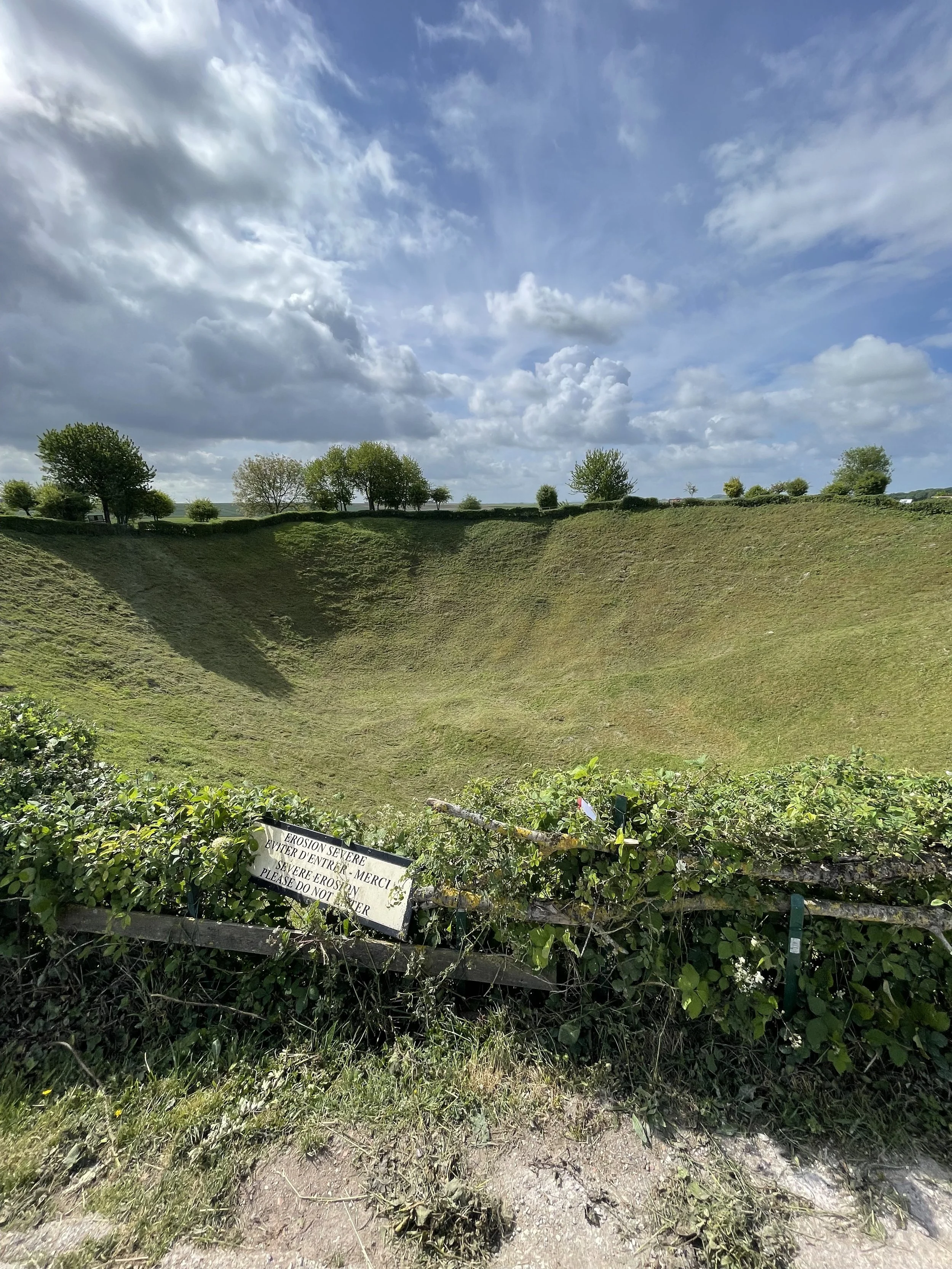Buckler's Hard: Where some of Nelson's navy was built and a chance to explore a preserved Georgian village.
/Buckler’s Hard has three historical phases; a proposed sugar town that failed, a shipbuilding yard initially providing ships for the Royal navy and a base for various things linked to World War Two but especially D Day.
Walking from the car park you suddenly come across this beautiful, unmodernised, Georgian street. Looking at the top photo, the houses on the left are of a better quality and were for skilled artisans whereas the houses on the right are of slightly lower quality and were used by shipbuilders with more general trades.
Just over 300 yers ago, there were no houses here but the Duke of Montagu (1690-1749) had a dream of creating a town here that would become a centre for importing sugar from the West Indies. His settlement would, he believed, be quite large and would make him a fortune, being the sole owner of the land. Unfortunately, by 1731, only seven houses had been built and the project flopped.
Below; at the shoreline you can see 2 places where ships were built and launched.
Below; some more launch areas and a load of large beams in various natural shapes which can be used for particular functions.
Below; a closeup of a naturally formed “Y” shaped beam. Looking at the second diagram below, it looks like an unused piece for a “crooked floor”.
Below; in the museum, there are two information boards to illustrate the usefulness of such naturally shaped beams of wood.
What can you see in the museum?
By the 1740s, Buckler’s Hard had become a civilian owned dockyard that would carry out government contracts to build ships for the royal Navy. In the museum there are some amazing models of shipbuilding as shown in the picture below.
If you look closely at the photo of the model you can see the intricate details of what the village looked on Friday3rd June, 1803. This was just three days before the launch of Euryalus, on the right of the two ships.It is truly enchanting.
Below: a closeup of two ships being built; the top on is Euryalus and the lower one is Swiftsure. Having gone into the water, Euryalus will be towed by rowing boats to Portsmouth and then have her masts installed along with some cannons.
Notice that the distance between the houses allows a lot of wood to be stored nearby ready for construction. A vast amount of wood was needed for each ship and a lot of labourers.
Below: a brilliant model of the Euryalus in the museum.
Below; an information board showing the launch of the Euryalus.
To make certain that the shipbuilders kept to the plans and build quality ships, Henry Adams was appointed to oversee the process by the “Navy Board” in 1744. He liked the place so much that he took over the shipyard and built ships himself.
Below: The museum has a reconstruction using full size wax models, of Henry Adams at work in his office
Below: A model of Agamemnon which was launched in April 1781. Apparently, it was one of Nelson’s favourite ships. Coincidentally, in its first crew was Thomas Hardy who became famous for holding on to Nelson as he was dying at the Battle of Trafalgar and being present as Nelson said “kiss me Hardy”. Note, there is some controversy about this but three witnesses repeated this and, at the time, such platonic kisses between men were common in times of stress.
Nelson served on the Agamemnon between 1793-6 and it took him to Naples where he met Sir William Hamilton, who politely introduced him to his wife Emma Lady Hamilton who famously became Nelson’s mistress. On board Agamemnon in 1794, whilst fighting outside Corsica Nelson was wounded and lost his right eye. Sadly, Agamemnon sank in the mouth of the River Plate in Uruguay but has recently been discovered and investigated by marine archaeologists. There is a fascinating video of the investigation in the building close to shore.
Three ships built at Buckler’s Hard participated, in varying degrees, in the Battle of Trafalgar in 1805. Agamemnon and Swiftsure took part in the fighting whereas Euryalus had various non fighting roles.
Below: a map of the ship positions at the Battle of Trafalgar including the three built at Buckler’s Hard. The Victory was not built at Buckler’s Hard but it was Nelson’s flagship.
Below is a photo of some of the tools that were used in building the ships. The large tool on the left that looks like a large hoe is an “adze” which is used for shaping large beams through chopping pieces off until the right shape is obtained.
Below is a proof “caulking” tool. This is where the gaps between the planks are filled by oakum made from strands of old rope that is bashed into the cracks and then painted with tar to make it a watertight seal.
Below; a photo of an exhibit where you can have a go at filling in the gaps.
Below; this old phrase meaning something for nothing comes from this technique for for filling in the gaps.
Below: A large waxwork model scene from the tavern known as “The New Inn”. This was an important meeting place run by Joseph Wort. Local stories suggest that this was also this was also a base for smuggling organised by landlord Wort.
Below: Wort’s daughter is conducting possible business with a travelling pedlar, a man who goes from door to door trying to sell occupants various goods. You can see his range of goods in the open case on the floor.
Below: Two old friends passing away the time playing cards. Notice the tricorn hat that one of the players is wearing.
Below: A scene from a small labourer’s cottage. The children have to swing the ball on the string and catch it in the wooden cup.
Below: Notice how tiny the kitchen is!
Below: A small bedroom. The chamber pot on the floor acted as the toilet!
Buckler’s Hard also had a role to play in World War Two. It acted as a base for motor torpedo boats and a concrete slipway was constructed to repair and service them.
In the photo below you can see one of the ships operating in the area. This is from a short video in the museum.
For France to be retaken from Germany, a harbour had to be captured but, unfortunately, all the harbours were stacked full of defensive structures and artillery. To attempt to capture one of these harbours would have meant great losses of life and failure. However, someone came up with the idea of making a kind of prefabricated harbour and towing the sections across the channel. The mulberry harbours were incredible inventions and one key part were the floating pontoons which supported the floating roadways that were used to facilitate the unloading of the vital supply ships. As a consequence, fifty concrete, floating pontoons were built at Buckler’s Hard.
In the photo below a model shows the pontoons carrying the floating roadway which can be seen in the fantastic D Day museum in Arromanches, France
Below; a noticeboard showing a photo of the pontoons which is sited on the cliffs overlooking Arromanches and the remains of the Mulberry Harbour.
Click here to discover more about Arromanches and its Mulberry Harbour.
In the build up to D day June 6th 1944, the Beaulieu estuary was full of floating vessels that were to play a key role in the events of that day and the following days. A variety of landing craft were stationed here that would land troops as well as tanks and other machines.
Below is a photo of a landing craft that you can visit at the D Day Story, Portsmouth.
Click here to discover more about “The D Day Story Museum”.
Below: On the other side of the street is the “Master Builders’ House Hotel”. If you go inside not only will you be able to get a drink and some excellent food, you will also be able to see this piece of D Day graffiti. My original photo is the top one and an enhanced version illustrating the graffiti is below.
Below; also in the Hotel’s restaurant is this board with the list of warships built at Buckler’s Hard.
Essential information.
Click here for details of getting to Buckler’s Hard.
Click here for Opening times
Click here for entry ticket prices and car park fees. Note, get there early for a car park space and one fairly close to the entry.












































Buckler’s Hard has three historical phases; a proposed sugar town that failed, a shipbuilding yard initially providing ships for the Royal navy and a base for various things linked to World War Two but especially D Day. Walking from the car park you suddenly come across this beautiful, unmodernised, Georgian street. One side of the road contains an amazing museum of all the activities that have taken place over the last 300 years. It includes some intricate models of sailing ship building here, loads of artefacts and full size waxwork models illustrating life in the late 18th and early 19th centuries.